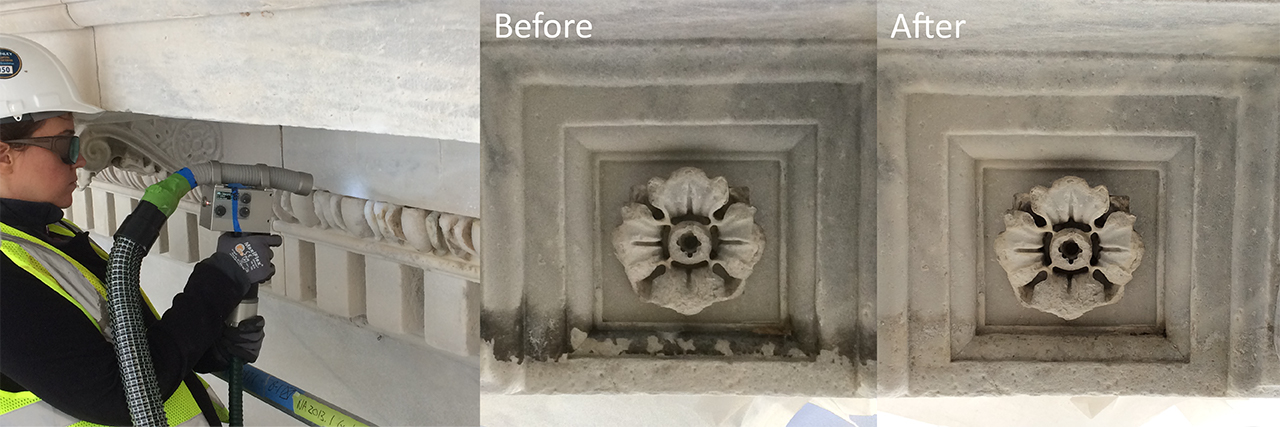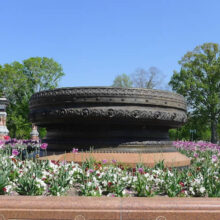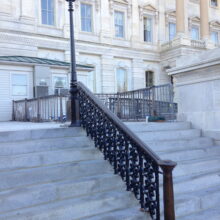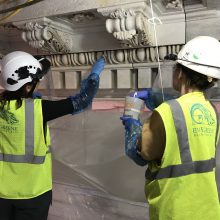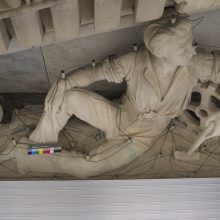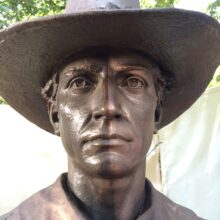Laser Focused
“Laser” is an acronym for light amplification by stimulated emission of radiation. The physics behind it was first described by Albert Einstein, for which he was awarded a Nobel Prize. For many of our projects, our conservators use laser ablation, also called photoablation or simply laser cleaning, to preserve delicate, historic surfaces. This method is designed for safety, less invasive, flexible to mobilize, and more environmentally friendly.
Kelly Caldwell, Director of Conservation/Senior Conservator, shared some valuable insights when interviewed by SPIE (the International Society for Optics and Photonics) for their July 2020 edition of Optics Does That? series.
Lasers were first used for cleaning stone in the 1970s, but “it wasn’t really until the ‘90s that it became common. Institutes started really investigating their uses within the field of conservation. Commercial laser technology became less expensive and more accessible, plus lasers began to offer a greater variety of output characteristics, allowing them to be used on a wider variety of materials, such as organics, textiles, plasters, and bronze. But no matter what material is being cleaned, the goal is to remove impurities without altering the material itself. Conservators have a wide array of mechanical, chemical, and optical tools at their disposal, and knowing how each tool interacts with the material is critical for effective cleaning. It always goes back to knowing what you are cleaning before you start…especially with lasers.
Safety and training are essential for our team. All our operators are trained with Laser Institute of America (LIA) in-house classes and we have several LIA trained Laser Safety Officers to oversee project site safety. EverGreene currently employs 18 certified laser users and four (4) laser safety officers. We own two 100-watt and three 500-watt 1064nm lasers designed for portability and use on job sites for which our operators are certified. We also utilize other lasers from 100 to 1000-watts, depending on the project needs.
Staying At The Leading Edge
Along with these lasers, EverGreene utilizes innovative tools and digital documentation systems such as photogrammetry and Lidar laser scanners for high-definition anamorphic 3D perspective, drones for external site assessments and 360 cameras for interior space documentation. Our Design Studio utilizes digital plotters for large scale printing prototypes for repeat patterns working hand in hand with our Mural Studio. These modern technologies are complimented by further combining traditional hand drawing/sketches, unique mold making visual effects, empowering us to achieve higher standards than most in the industry.
